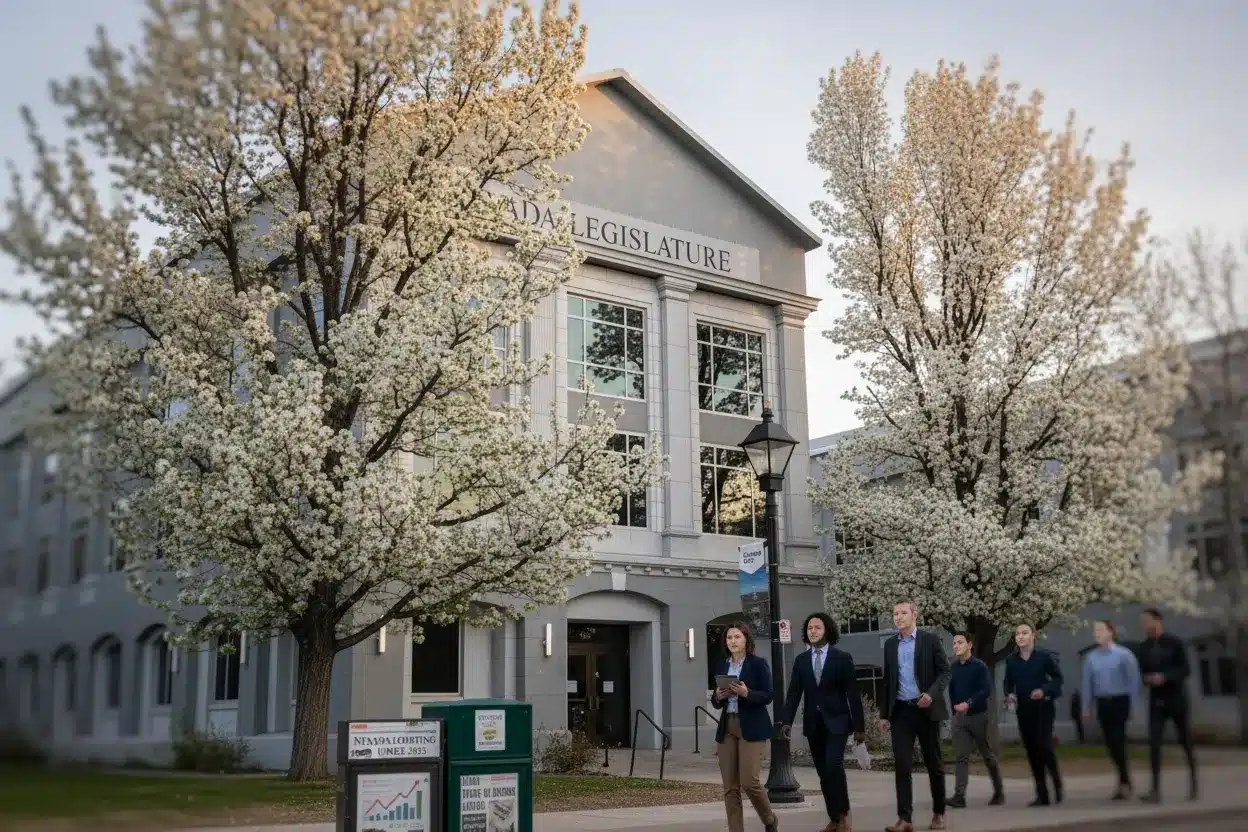Nevada’s local governments have broken another record, and this time it’s not for the world’s largest slot machine. Lobbying spending has reached new heights for 2025, leaving many to wonder: why the surge, and what are all these public dollars really funding amid Nevada’s buzzing legislative corridors?
The Numbers: Who’s Spending, and Why?
Nevada’s local governments are flexing their influence muscle. According to a report from the Nevada Department of Taxation, these entities have continued their starring role in the state’s legislative theater, as reflected in the spending tallied up for 2025. What’s fueling the latest record? It’s a 10 percent jump over 2023’s already historic outlay on local government lobbying expenses.
But the data reveal something new: for the first time since at least 2005, county governments outspent city governments on lobbying. Clark and Washoe counties led the charge, with their governments ramping up spending by more than $225,000 combined compared to the previous session. In a surprising plot twist, most city governments actually tightened their belts, spending less this year than they did two years ago.
Of course, there are exceptions to every trendline. The City of Reno, perhaps not wanting to miss out on the action, more than doubled its lobbying activity. Why? The city was busy working on proposals to provide rental assistance and pushing to revise the state’s property tax structure to boost education funding.
The Heavy Hitters: Clark and Washoe Dominate
Clark and Washoe counties aren’t just Nevada’s population centers; they’re also the big spenders. It’s no coincidence. These two counties—together home to nearly 90 percent of Nevada’s residents—were responsible for close to 90 percent of the lobbying expenses tracked in the state’s latest report.
- Lobbies meet lawmakers and testify on bills affecting government operations.
- Expenses primarily cover salaries and travel costs—think of it as business class, government edition.
- These efforts are not exactly unique: businesses and citizen groups deploy similar tactics to win support or exceptions in state government.
Small Towns, Big Price Tags
Now, if you believe that small, rural counties fly under the radar, think again. When you crunch the numbers on a per capita basis—dividing a government’s total lobbying spend by the number of people it serves—the tiny counties emerge as giants. In these areas, local governments spent disproportionately large amounts to make their voices heard despite tiny populations.
Case in point? Storey County, nestled east of Reno with a population hovering around 4,000, spent a jaw-dropping $120,000-plus on lobbying in 2025. More than two-thirds of this came directly from the county government. Why dig so deep into the pockets?
Storey County had high stakes this year: the county sponsored SB69, a bill altering tax abatement rules for big-budget projects. The new law requires recipients of tax breaks to contribute to public service costs. The bill won bipartisan support and was signed by Governor Joe Lombardo—a legislative feat, but not without a cost.
According to County Manager Austin Osborne, Storey County has felt the sting of what he called a “hostile takeover” by the Legislature in recent years. He cited the infamous “Innovation Zones” proposal as an example. The message: rural counties feel a need to amplify their voices in Carson City, often investing hefty sums to protect their local interests.
Why All the Lobbying?
So, what’s behind all this spending? Local governments don’t lobby just for fun (though the travel may be a bonus). As Jensen explained, they often recruit seasoned lobbyists who know the legislative ropes, aiming to “cut through the noise.”
Their goal is to secure particular benefits or exceptions from the state government—no different, Jensen pointed out, from the lobbying efforts by private companies or citizen groups.
- Local governments hire lobbyists to safeguard or advance interests.
- The approach mirrors that of businesses seeking favorable outcomes.
- This is a core part of how state-level policymaking happens in Nevada.
The bottom line: As Nevada’s legislative stakes rise, so too will the cost of a seat at the table—whether you’re Clark County, Storey County, or anywhere in between. For taxpayers and policymakers alike, keeping an eye on the lobbying meter may be more important in sessions to come.

John is a curious mind who loves to write about diverse topics. Passionate about sharing his thoughts and perspectives, he enjoys sparking conversations and encouraging discovery. For him, every subject is an invitation to discuss and learn.






